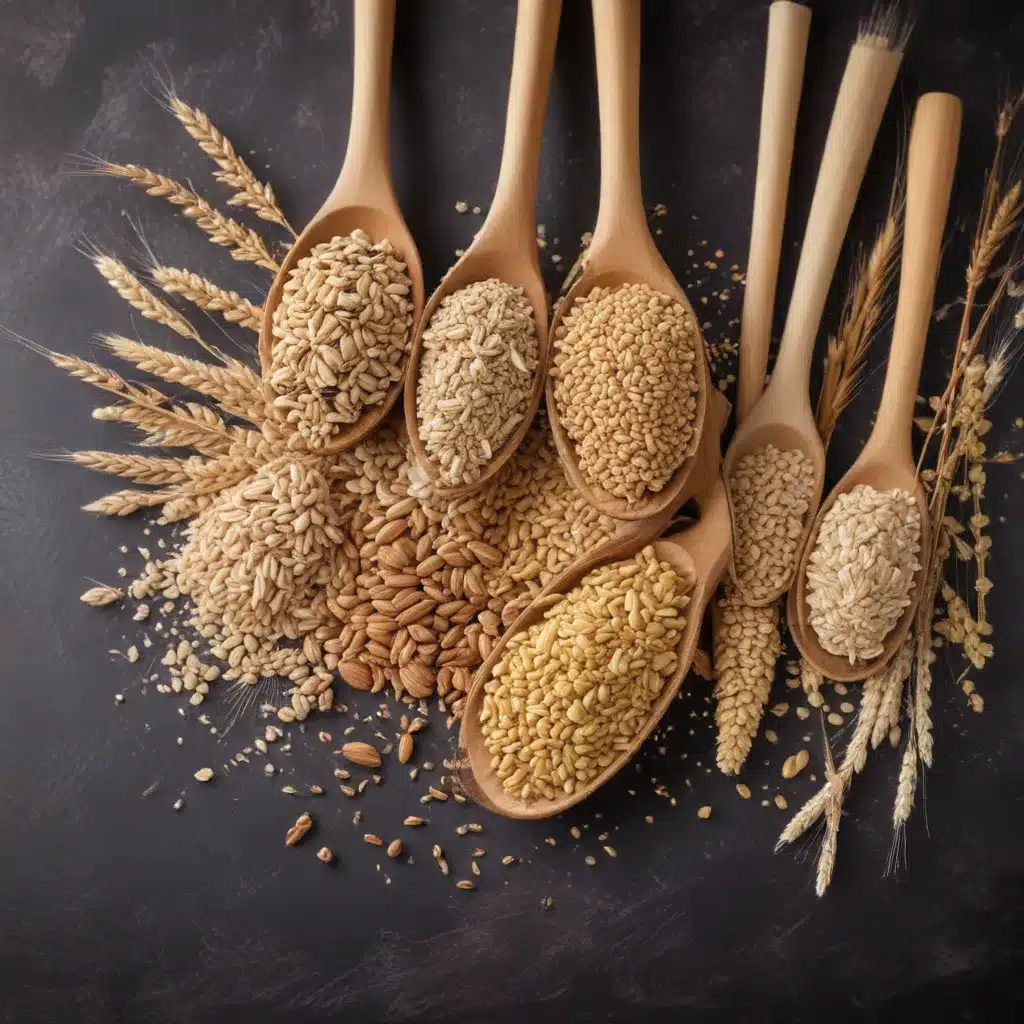
The Benefits of Whole Grains in Baking
When it comes to baking, the days of relying solely on white flour are long gone. Whole grain flours are becoming increasingly popular among home bakers and professional chefs alike, offering a wealth of nutritional and flavor benefits that simply can’t be matched by their refined counterparts. By incorporating whole grains into your bread, muffins, and pastries, you’ll not only enjoy richer, more complex tastes, but you’ll also be nourishing your body with essential vitamins, minerals, and fiber.
One of the key advantages of whole grain flours is their higher nutrient content. Unlike white flour, which has the germ and bran removed, whole grain flours contain the entire wheat berry, including the nutrient-dense outer layers. This means you get a boost of B vitamins, iron, zinc, and magnesium with every bite. Whole grains are also an excellent source of fiber, which can promote digestive health and help keep you feeling fuller for longer.
But the benefits of whole grains extend beyond just nutrition. These flours also bring a unique depth of flavor to baked goods, thanks to the natural oils and enzymes present in the bran and germ. From the nutty, earthy tones of whole wheat to the sweet, almost honey-like notes of einkorn, each type of whole grain flour offers its own distinct personality. Blending different grains can further enhance the complexity, creating a true symphony of flavors in your loaves and pastries.
Exploring the World of Ancient Grains
While whole wheat may be the most familiar whole grain option, there’s a whole universe of ancient grains waiting to be discovered. These unique varieties, such as spelt, einkorn, emmer, and khorasan, have remained largely unchanged for centuries, offering a tantalizing taste of history in every bite.
Spelt
Spelt is a close relative of modern wheat, but with a distinct flavor profile that sets it apart. This plump, golden-hued grain is known for its nutty, almost sweet aroma and slightly chewy texture. Spelt is also a complete protein, containing all nine essential amino acids, making it a nutritional powerhouse.
Einkorn
Einkorn is considered the oldest known variety of wheat, dating back thousands of years. Its small, golden kernels yield a flour that is rich in carotenoids, imparting a lovely hue to baked goods. Einkorn is often described as having a delicate, almost floral flavor, with a delightfully tender crumb.
Emmer
Also known as farro, emmer is prized for its robust, almost earthy flavor and slightly coarse texture. This ancient grain was a staple food in ancient civilizations and is making a comeback among modern bakers seeking out unique, heritage grains.
Khorasan (Kamut®)
Khorasan, marketed under the brand name Kamut®, is a relative of durum wheat and is known for its large, elegant kernels. The resulting flour is soft and golden, with a buttery, almost sweet taste that lends itself beautifully to artisan breads and pastries.
Baking with Whole Grains: Tips and Techniques
Incorporating whole grains into your baking may require some adjustments, but with a bit of experimentation, you’ll be crafting magnificent loaves and pastries in no time. Here are some tips to get you started:
Adjust the Flour Blend
When using whole grain flours, you may need to adjust the ratio of whole grain to white flour in a recipe. As a general rule, you can substitute up to 25% whole grain flour without drastically altering the structure of the dough. This allows you to enjoy the flavor and nutritional benefits without compromising the crumb.
Increase Hydration
Whole grain flours tend to be thirstier than their refined counterparts, so you may need to increase the overall hydration of your dough. This helps compensate for the water-absorbing properties of the bran and keeps your baked goods from becoming too dense.
Extend the Autolyse
The autolyse, a rest period where the flour and water are combined before the addition of other ingredients, is especially important when working with whole grains. Extending this step allows the bran and germ to fully hydrate, leading to better gluten development and a more open crumb.
Sift for Structure
If you find that your whole grain loaves are coming out a bit too dense, try sifting the flour to remove some of the coarser bran particles. This can help improve the overall structure and rise of your bread without sacrificing too much of the whole grain goodness.
Embrace the Variations
Baking with whole grains means embracing a bit of variability. Each flour will behave slightly differently, so pay close attention to your dough’s development and adjust your process accordingly. The more you experiment, the more you’ll learn about the unique properties of each ancient grain.
Discovering the Joy of Whole Grain Baking
As you venture into the world of whole grain baking, be prepared to be delighted by the rich flavors, hearty textures, and nutritional benefits these flours have to offer. Whether you’re creating a classic sourdough loaf or crafting a batch of delicate whole wheat croissants, the rewards of working with whole grains are truly immeasurable.
Not only will your baked goods taste better, but you’ll also be supporting a more sustainable food system by reconnecting with ancestral grains and the farmers who grow them. So why not take the plunge and start exploring the wonderful world of whole grain baking? Your taste buds and your body will thank you. For more inspiring recipes and tips, be sure to visit https://kitchenwarrior.co.uk/.


